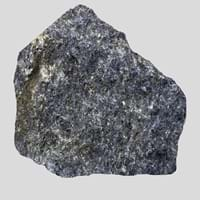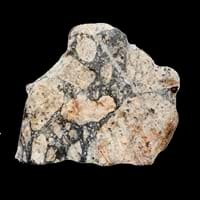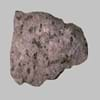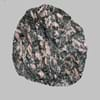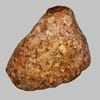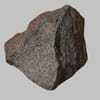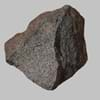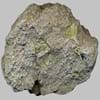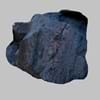Definition
Blueschist is a metamorphic rock which is generally blue in color and is formed under conditions of high pressure and low temperature
Breccia is a rock consisting of angular fragments of stones which are cemented by finer calcareous material
Discoverer
Edgar Bailey
Unknown
Etymology
From French schiste, Greek skhistos i.e. split
From Italian, literally gravel, Germanic origin and related to break
Class
Metamorphic Rocks
Sedimentary Rocks
Sub-Class
Durable Rock, Medium Hardness Rock
Durable Rock, Hard Rock
Group
Not Applicable
Not Applicable
Other Categories
Fine Grained Rock, Medium Grained Rock, Opaque Rock
Coarse Grained Rock, Medium Grained Rock, Opaque Rock
Texture
Foliated
Brecciated, Clastic
Color
Blue, Bluish - Grey, Purple, Shades of Blue
Beige, Black, Blue, Brown, Buff, Green, Grey, Orange, Pink, Purple, Red, Rust, White, Yellow
Durability
Durable
Durable
Appearance
Dull and Banded
Layered, Banded, Veined and Shiny
Interior Uses
Floor Tiles, Flooring, Homes, Hotels, Kitchens
Countertops, Decorative Aggregates, Entryways, Floor Tiles, Flooring, Homes, Hotels, Interior Decoration
Exterior Uses
Garden Decoration, Office Buildings
As Building Stone, As Facing Stone, Paving Stone, Garden Decoration, Office Buildings
Other Architectural Uses
Not Yet Used
Curbing
Construction Industry
As Dimension Stone, Cobblestones, Rail Track Ballast, Roadstone
As Dimension Stone, Construction Aggregate, Landscaping, Roadstone
Medical Industry
Not Yet Used
Not Yet Used
Antiquity Uses
Artifacts, Monuments, Sculpture
Artifacts, Sculpture
Commercial Uses
Cemetery Markers, Commemorative Tablets, Creating Artwork, Curling, Tombstones
Creating Artwork, Gemstone, Jewelry
Types
Not Available
Collapse Breccia, Fault Breccia, Flow Breccia, Pyroclastic Breccia, Igneous Breccia and Impact Breccia
Features
Has High structural resistance against erosion and climate, Very fine grained rock
Available in Lots of Colors and Patterns, Clasts are smooth to touch
Archaeological Significance
Monuments
Used
Not Yet Used
Famous Monuments
Data Not Available
Not Applicable
Famous Sculptures
Data Not Available
Data Not Available
Pictographs
Used
Not Used
Petroglyphs
Used
Not Used
Formation
Blueschist forms due to the metamorphism of basalt and other rocks with similar composition at high pressures and low temperatures and approximately corresponding to a depth of 15 to 30 kilometers and 200 to 500 °C.
Breccia is a clastic sedimentary rock which is composed of broken fragments of minerals or rock which are cemented together by a fine-grained matrix and it forms where broken, angular fragments of rock or mineral debris accumulate.
Mineral Content
Albite, Chlorite, Epidote, Garnet, Glaucophane, Lawsonite, Muscovite or Illite, Quartz
Calcite, Clay, Feldspar, Phosphates, Quartz, Silica
Compound Content
Aluminium Oxide, CaO, Iron(III) Oxide, FeO, Potassium Oxide, MgO, MnO, Sodium Oxide, Phosphorus Pentoxide, Silicon Dioxide, Titanium Dioxide
Aluminium Oxide, Ca, NaCl, CaO, Iron(III) Oxide, Potassium Oxide, Sodium Oxide, Silicon Dioxide, Titanium Dioxide
Types of Metamorphism
Not Applicable
Burial Metamorphism, Cataclastic Metamorphism
Types of Weathering
Mechanical Weathering
Biological Weathering, Chemical Weathering, Mechanical Weathering
Types of Erosion
Chemical Erosion, Coastal Erosion, Water Erosion, Wind Erosion
Chemical Erosion
Grain Size
Fine to Medium Grained
Medium to Coarse Grained
Fracture
Conchoidal
Uneven
Streak
White to Grey
White
Porosity
Highly Porous
Less Porous
Luster
Dull
Dull to Pearly
Cleavage
Slaty
Non-Existent
Toughness
1.5
Not Available
Specific Gravity
3-3.2
2.86-2.87
Transparency
Opaque
Opaque
Density
2.8-2.9 g/cm3
0 g/cm3
Resistance
Impact Resistant, Pressure Resistant
Heat Resistant, Impact Resistant, Pressure Resistant, Wear Resistant
Deposits in Eastern Continents
Asia
Japan, Turkey
China, India, Kazakhstan, Mongolia, Russia, South Korea, Uzbekistan
Africa
Egypt, Ethiopia, South Africa
Namibia, Nigeria, South Africa
Europe
France, Greece, Iceland
Austria, Denmark, Germany, Great Britain, Netherlands, Norway, Poland, Sweden, Switzerland, United Kingdom
Others
Not Yet Found
Greenland
Deposits in Western Continents
North America
USA
Barbados, Canada, Mexico, Panama, USA
South America
Not Yet Found
Brazil
Deposits in Oceania Continent
Australia
New Zealand
New South Wales, New Zealand
All about Blueschist and Breccia Properties
Know all about Blueschist and Breccia properties here. All properties of rocks are important as they define the type of rock and its application. Blueschist belongs to Metamorphic Rocks while Breccia belongs to Sedimentary Rocks.Texture of Blueschist is Foliated whereas that of Breccia is Brecciated, Clastic. Blueschist appears Dull and Banded and Breccia appears Layered, Banded, Veined and Shiny. The luster of Blueschist is dull while that of Breccia is dull to pearly. Blueschist is available in blue, bluish - grey, purple, shades of blue colors whereas Breccia is available in beige, black, blue, brown, buff, green, grey, orange, pink, purple, red, rust, white, yellow colors. The commercial uses of Blueschist are cemetery markers, commemorative tablets, creating artwork, curling, tombstones and that of Breccia are creating artwork, gemstone, jewelry.
